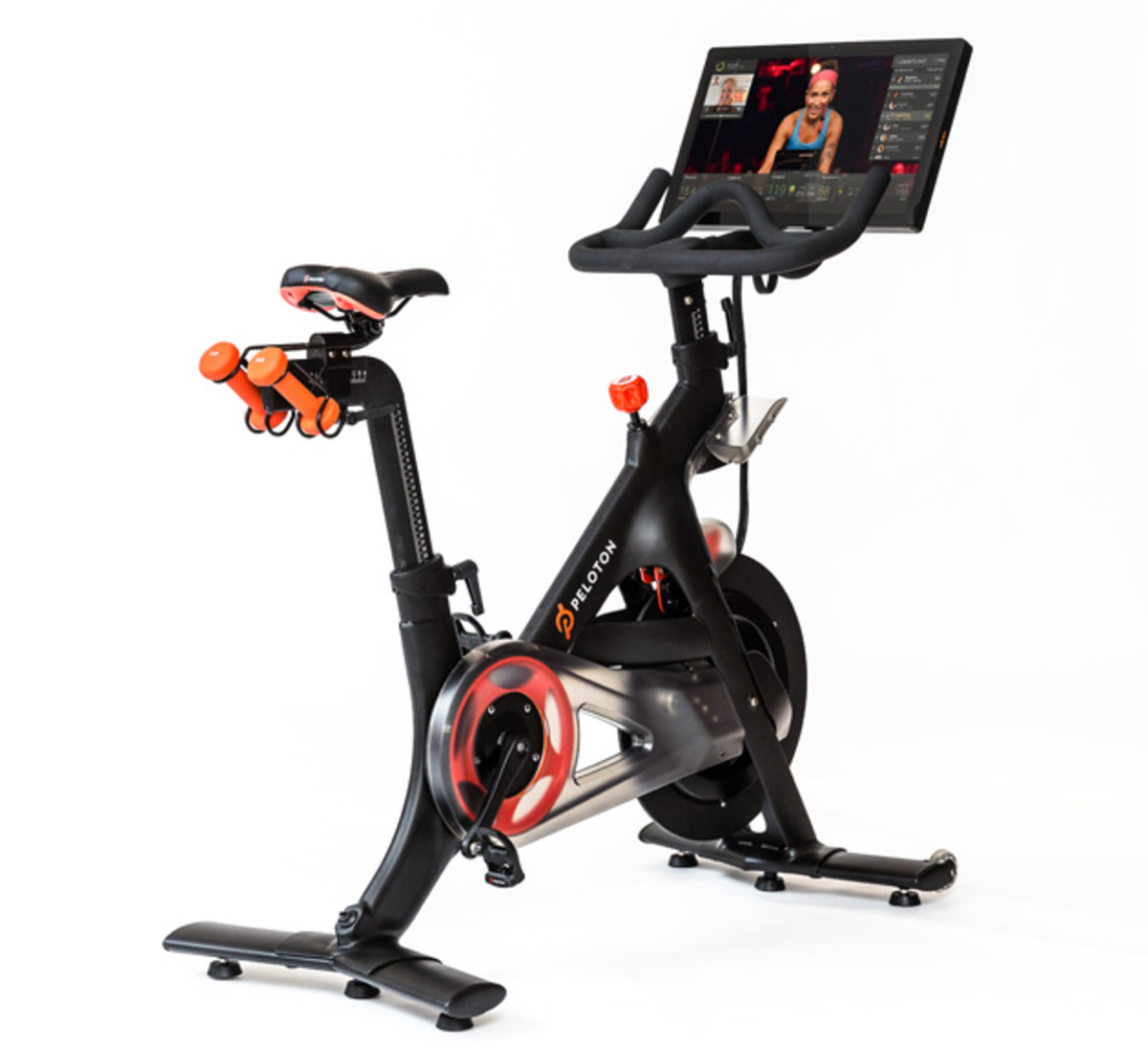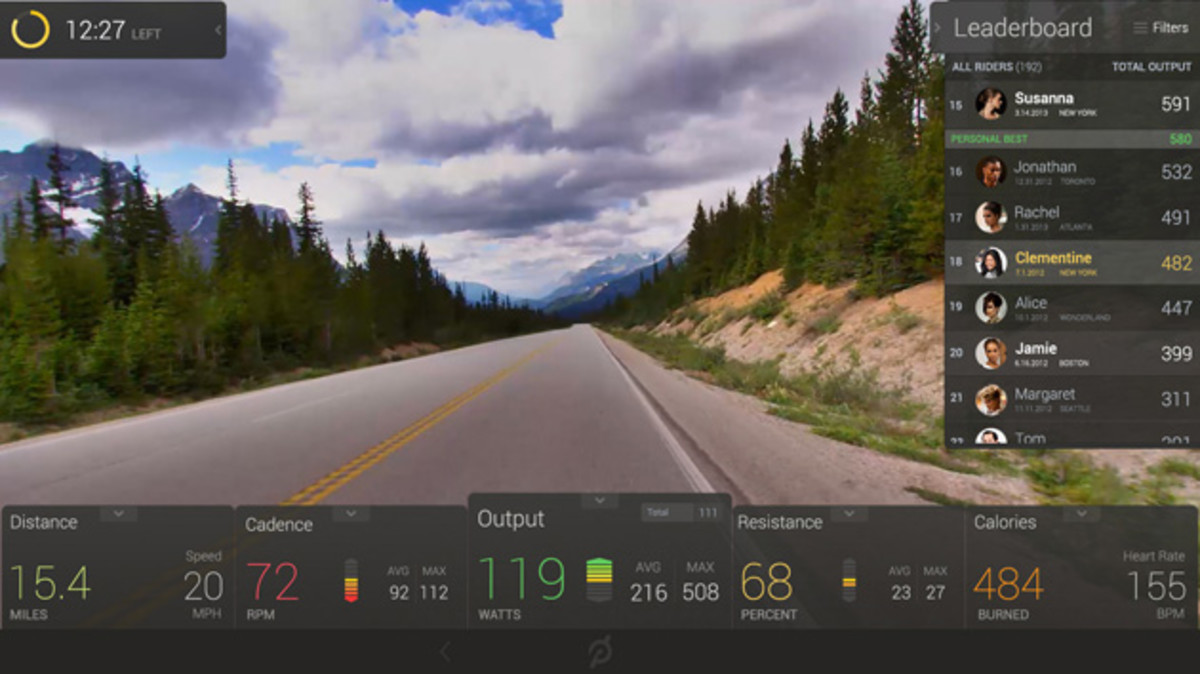Peloton's interactive stationary bike lets you take on the world

Darth Vader’s no Lance Armstrong, but the guy can really crank on a spin bike. I discovered this one morning during a demo of the Peloton Spin Bike, an innovative new contraption that live-streams classes from a New York City studio to tablet-enhanced, web-connected bikes around the world. You just buy the set-up for your home, plug it in, turn it on, fire up an account and, next thing you know, the galaxy’s most menacing asthmatic has left you in his dust. It’s addictive, effective, and easy to use, if a little demoralizing.
Vader was an alias, of course, and whatever flesh-and-blood cyclist was hiding behind it must have been equally mystified by my nom de selle, Andre Dawson, in honor of the former outfielder for the Chicago Cubs and Montreal Expos. Who knows how fast the Hawk might be on a bike, but if he plunked down $2,000 for a Peloton unit we might find out.
Rebecca Rusch: Mountain biking's Queen of Pain lays down the rules
I signed up for a test of the Peloton system because I’m a weekend cyclist (read: wannabe) who wouldn’t mind purging a few beers from my system each morning and maybe keeping up with the pack during laps of Prospect Park in Brooklyn. “Free time” is a myth, in my book, and having a bike in the home cuts out the to-and-from of most spin classes. And besides—I’ve gone to spin classes, but all of that “find your chakra” quasi-spiritualism that comes along with some of them isn’t my bag. I just want to get on the bike, grind for an hour, rinse, and repeat. Peloton seemed like it would fit the bill.
The company’s name comes from the French word for a tightly-packed grouping of cyclists, most commonly seen winding up the hillside of the Alpe D’Huez every July in the Tour de France. Together you’re faster, thanks to the vagaries of drafting and aerodynamics, and the notion holds true with Peloton, too. The innovative system pulls in your telemetry—your cadence or RPMs, your wattage, and even a caloric burn estimate—which means there’s a lot more than just sweat to help gauge your workout and to help glue you to others in the class.

on the right-hand side of your 20-inch android-powered display. Try not feeling the competitive pull when “Janine from Saddle River, N.J.” approaches and then passes you on the virtual board. While I often started at a crawl, I found myself finishing most classes in full lather, in a near-sprint fugue as I jockeyed for rank.
And that’s all according to plan. “If your Peloton bike becomes a clothes hanger, we have failed as much as you have,” says John Foley, co-founder of Peloton and a cyclist himself. Unlike most in-home exercise equipment, Peloton delivers on this promise. You’re not just forcing yourself to hop on a bike—you're joining a class. A group. Sure, maybe sometimes you’re trying to beat most of them, but it’s a world of difference compared to a solitary rowing machine in the basement, a la Frank Underwood.
See what it's like to unicycle through the mountains of Moab, Utah
stop playing that Pitbull track). The best part of the library is that you don’t lose the competitive aspect: The telemetry from all other rides throughout history is recorded, and you’ll find yours inserted seamlessly, minute-by-minute, with all of the past rides—even your own.
Which means someday, maybe, Andre Dawson just might kick Darth Vader’s ass.

